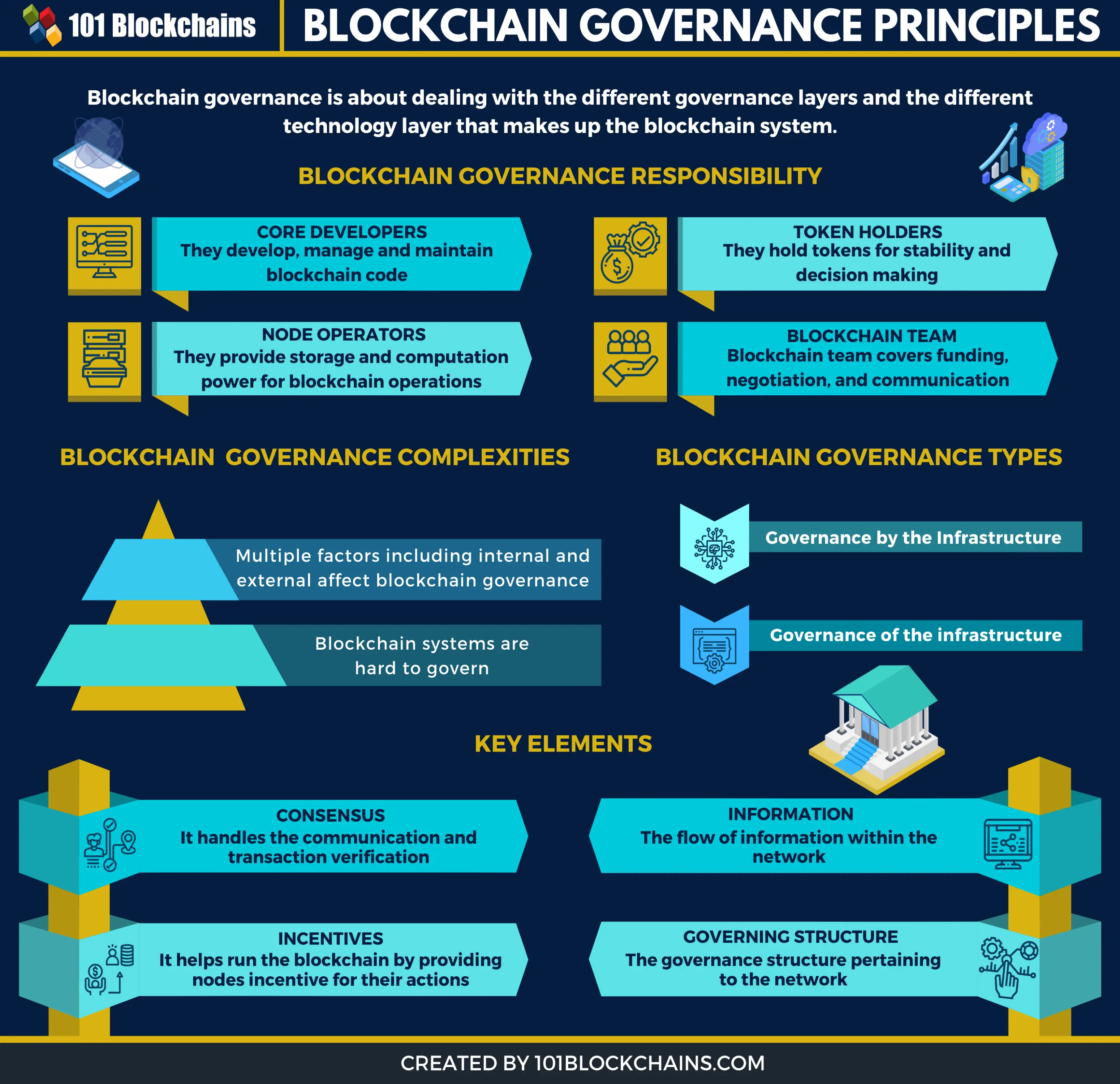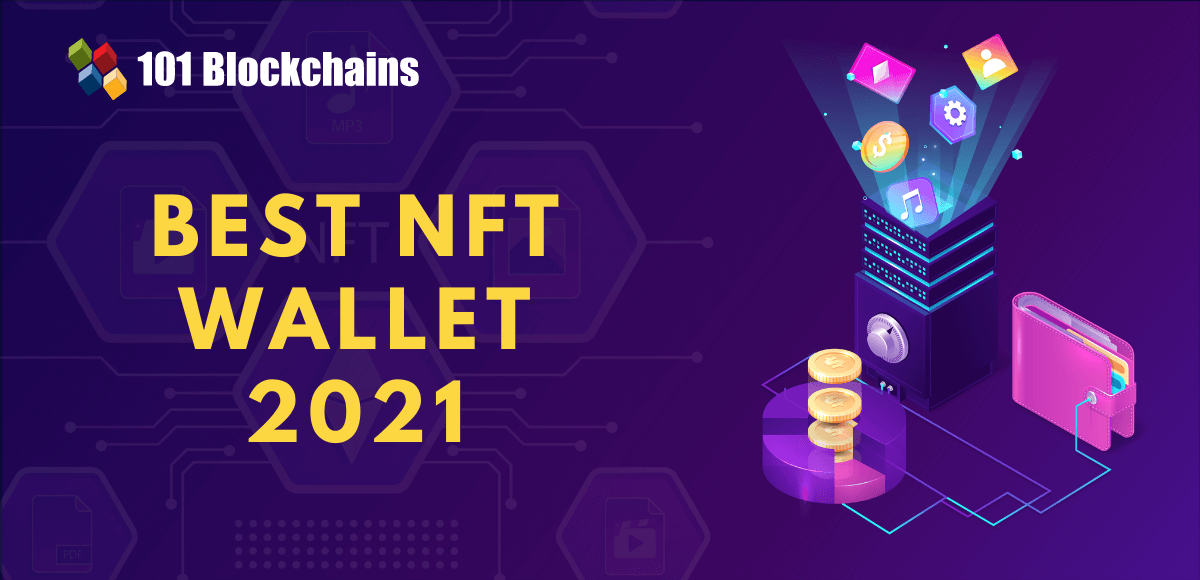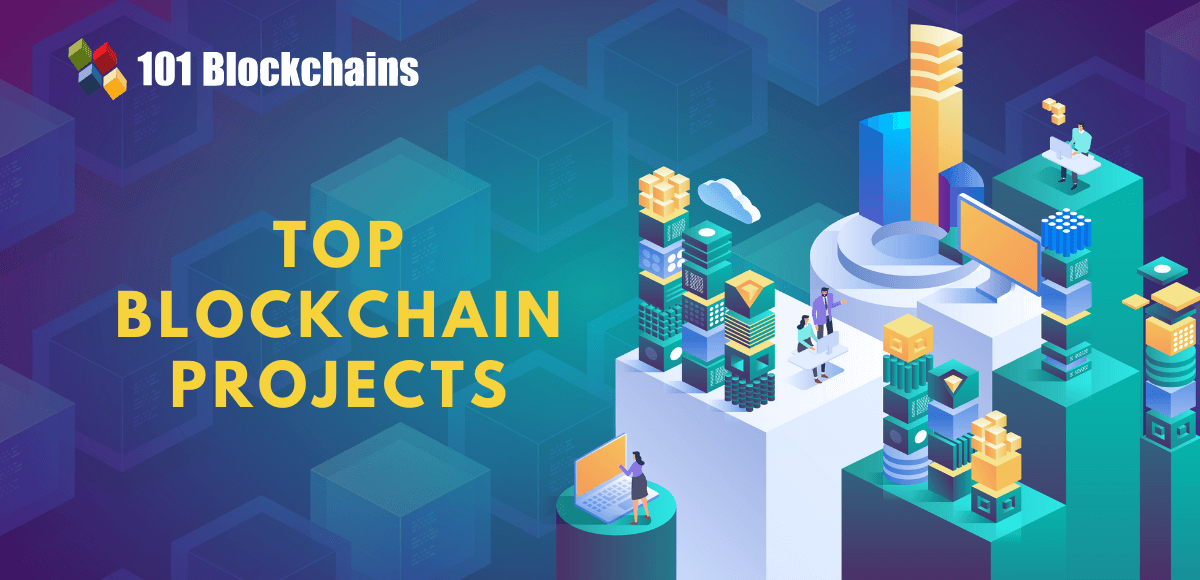Learn how blockchain truly works, master key definitions, and uncover what makes smart contracts so "smart." Dive into the fundamentals, gain valuable insights, and start your blockchain journey today!

- Reviews
101 Blockchains
- on August 19, 2020
Blockchain Governance Principles: Everything You Need To Know
Are you here to learn about blockchain governance principles? If you do, then you have come to the right place.
Governance is one of the old dictionary words.
But what does governance mean?
What is Governance?
Governance is a structure through which a participant or user of a system agrees to use the system. Almost every social structure has some sort of governance. You will also find governance in places where you least expect. After all, governance helps us to live a better life and follow the rules for everyone’s benefit.
Governments are a prime example of how governance functions. There are different types of governments and modes of governance. However, we can easily say that there are three principles that dictate governance. These principles include:
- Rulers
- Rules
- Participants
The rulers or the party that is providing governance can be a network, market, social system, or the government.
For any governance system to work properly, all the three elements need to work together and play nicely without interrupting the other.
As you must have guessed it by now, in governance, the rules set the rules based on the participant’s goals and needs. However, governance models can be far more complex than this. The governance models that we are going to discuss suffer from problems and complexity as they grow.
You can take big countries, for example, to understand the different governance models. China’s approach is different as they have a one-party governance system. Other countries deploy a democratic approach where people decide their government.
To get a better understanding, let’s learn about the different governance formats.
Governance Types
Both the digital and real-world can see some sort of governance. That’s why we can broadly categorize the governance types into two major categories:
- Standard Governance
- Blockchain Governance
Standard Governance
The standard governance applies to corporations, non-profits, stakes, partnerships, project teams, business relationships, and other similar groups. This means that the standard governance applies to any human group doing a creative or purposeful activity.
We can further categorize standard governance into the following:
- Direct Governance
- Representative Governance
Direct Governance
Direct Governance is a direct approach to governance. Here each user or participant takes part in the governance model by directly affecting every decision. To participate in decision making, the participant needs to vote when an action takes place. Participant’s votes determine the actions.
Another unique aspect of direct governance is the absence of an intermediary or centralized authority.
The closest example to the direct governance model is the Ancient Athens in 500 B.C. It was a semi-direct democracy. A more modern example would be the Swiss Cantons of Glarus and Appenzell Innerrhoden of Switzerland.
The direct governance model has its own advantages and disadvantages. Let’s check the advantages first.
Direct Governance Advantages
- Every participant’s vote counts toward decision making.
- The whole platform is towards collaboration and open discussion.
- Decisions are transparent as there is no intimidatory within the network.
- It is more accountable.
- Users or participants are in complete control as they affect every decision made through this model.
- Voters understand that their votes have a huge impact and have a responsibility factor associated with it.
- Transparency helps rouge agents to be identified and removed.
Direct Governance Disadvantages
- As everyone can participate in decision making, it makes it hard for the group to reach a consensus.
- Every member needs proper education before he can participate in direct governance. The burden of education adds extra cost to the voting process.
- Direct governance can be tricky to implement in some situations where not every participant is willing to vote and have their impact registered.
- As voting here has a huge impact, votes need to be made by keeping every aspect in mind. However, not every voter thinks and can vote selfishly.
- Voting manipulation is a possibility.
- The decision making done by people is not always practical or logical.
- Direct governance works best when the group is small in size. Big groups become increasingly challenging to manage using direct governance.
- Direct governance can cause information overload which is not ideal for today’s generation of users with low information overload.
- Influential people can carry out extreme manipulation
Representative Governance
Now that we have a clear understanding of direct governance, it’s now time to take a look at representative governance.
The representative governance works differently as the users vote to choose their representative. Once chosen, the representative takes decisions on behalf of the people. The representative also takes care of new rules and then implements them throughout the system.
To get a better understanding, let’s take a look at the representative governance advantages and disadvantages.
Representative Governance Advantages
- Representative governance is efficient
- If problems occur, representatives can make proper decisions to address them.
- Representative’s final decisions are mostly balanced
- People can choose their own representatives.
- Huge groups can flourish in representative governance and hence are easier to manage.
- It is also cost-effective as there is no need to educate people about the system.
Representative Governance Disadvantages
- The chosen representative can choose to work towards his/her self-interest rather than the people’s needs and goals.
- The trust in the system is a major cause of concern
- It is hard to satisfy the whole section of people.
- Lack of accountability
- Unfair representative selection can result because of manipulation election practices.
Blockchain Governance: Getting Started
One of the blockchain’s key feature is decentralization. This makes blockchain governance tricky. Most of the companies out there use centralization and hence governing them is not as complex as governing a decentralized platform, network, or social group.
With multiple aspects of blockchain not ideal, it becomes a big challenge to implement blockchain governance principles. On top of that, blockchains are always evolving at a rapid pace where the users need to adapt to the ever-growing ecosystem. The end goal is to benefit the user, and hence with time, the systems change to comply with the goal.
Blockchain governance is the idea of managing the ever-changing state of blockchain’s needs and demands.
To truly understand blockchain governance, we need to clearly understand blockchain and what it has to offer.
Blockchain governance is about dealing with the different governance layers and the different technology layer that makes up the blockchain system. Other key aspects that also need to be covered within the blockchain system include its operations depending on whether it is a framework, application, or network. Also, the rules for governing the system depend on the internet infrastructure which makes up that particular blockchain technology.
Blockchain Governance Importance
Clearly, blockchain is an evolving technology. Blockchain governance makes sure that everything works seamlessly. It is important to make sure that the blockchain can function efficiently while still in active development by developers all around the world.
Blockchain Governance Responsibility
But, what about the responsibility of blockchain governance? Who is behind it?
To mitigate the problem, blockchain governance relies on four central communities, rather than just one. The number of central communities can differ depending on the blockchain itself, but in most cases, these four communities are always in charge of managing the blockchain governance.
So, who are those four central communities? They are as follows:
- Core developers
- Node operators
- Token holders
- Blockchain team
Core Developers
The core developers are responsible for developing, managing, and maintaining the core code of the blockchain. They can write, update, or remove code that has a direct impact on the blockchain’s functionality, and hence can impact every user out there.
Node Operators
The node operators are responsible for carrying the blockchain ledger full copy. They run operations from their computers and are responsible for deciding whether features will run on nodes or not. Code developers need to consult node operations before they decide on any features.
Token Holders
Token holders are the people who are part of the blockchain ecosystem by holding blockchain tokens with them. They take part in the governance through voting rights when changes are made to the blockchain including feature changes, set prices, and so on! Token holders are also seen as investors who make their voices heard by having a good amount of token percentage holding.
Blockchain Team
The blockchain team can refer to a non-profit organization or firm that takes on different roles to manage the blockchain. In most cases, it is more about getting funding for the project rather than having a direct impact on the features of the blockchain. However, they can act as a mediator when it comes to negotiating for features between the investor community, the core developers and node operators. You can think of the blockchain team as a marketing team trying to sell the product and communicating the needs of investors to the other more critical communities such as developers and node operators.
Complexities With Blockchain System Governance
There are multiple complexities that come with blockchain governance. There are multiple factors that go in when governance principles are laid out. The governance principles also depend on the blockchain type, their philosophy, and stakeholders’ demand.
For instance, there are always multiple factors that play into blockchain governance. You have to take into account the different technology layers that make the blockchain system. The framework, application, or network play a role in how the blockchain governance is implemented and managed.
We can fundamentally divide the type of blockchain governance into two categories:
- Governance by the Infrastructure
- Governance of the infrastructure
There is a subtle notice between the two where the first one is about governance based on the infrastructure, whereas the second one is about infrastructure governance. In any case, both the approaches have their own ruleset which is formed and managed by the community or the involved third parties.
That’s why it is important to first understand the multiple layers of blockchain that directly or indirectly affect the blockchain governance. If we do it right, then we can have a clear picture of the complexity associated with blockchain governance.
Why Centralized Systems Are Not So Hard To Govern
A centralized system’s central authority can govern the system without much resistance or complexity. It becomes easier as everything is under their control. So, if a problem comes up, they can look to solve the problem or completely shut it down if it is against their philosophy.
In comparison, decentralized systems do have the liberty to be controlled or governed by a centralized authority. As decentralized networks are peer to peer, they enjoy the benefit of being not controlled by anyone and hence also do not have a single point of failure.
Blockchain Governance Strategies and Elements
In this section, we will take a look at the different blockchain governance strategies. In any blockchain ecosystem, you can find two types of implementation: off-chain and on-chain. The on-chain is where the rules are defined to cover the blockchain systems underlying infrastructure. The off-chain rules are rules that are aimed for external operations and the system’s future development.
Each of these implementations has its own advantages and disadvantages and we will discuss them in detail. However, to truly understand, let’s first list and define the blockchain governance elements first.
Blockchain Governance Elements
The blockchain governance elements can be categorized into four important elements. These elements make it easy to identify the blockchain components. Also, by defining the elements clearly, it will become easier to govern the blockchain.
So, the elements that we are looking at are as below:
Consensus
The consensus algorithm takes care of the transaction verification within the network. Different blockchain systems implement different consensus algorithms which can benefit the miners directly or indirectly. Some of the popular consensus algorithms include Proof-of-Work(PoW), Proof-of-Stake(PoS), and so on.
You can think of it as hierarchical centralization when compared to traditional governance.
Incentives
Incentives let the different workers help run the blockchain. So, this is applicable to the miners or other entities that are bringing success to the network. In these simple words, there should be an incentive for everyone who is taking part in the wellness and functionality of the network.
Information
Information plays a crucial role when it comes to any blockchain, be it either public or private. As blockchain is decentralized, a lot of information needs to be in the network. This is very different compared to traditional governance done by major corporations and governments.
This has a deep impact on how the network works, both on-chain and off-chain. However, in most cases, it offers better outcomes compared to a more closed ecosystem.
Governing Structure
The governing structure in the case of blockchain is more flexible compared to traditional institutions and can be co-related to the consensus. So, in the case of traditional approaches, the government structures are defined correctly and are not changed that often.
In comparison, corporate identities can also act rigidly when it comes to governing structure. They mostly choose a top-down approach.
In the case of blockchain, the governing structure is very different. It needs to be fluid to ensure that it fits the ever-changing dynamic of the network.
Understanding The Two Types of Blockchain Governance: Off-Chain and On-Chain
Now that we have gone through the blockchain governance key elements, it is now time for us to understand those key elements in two different settings: Off-chain and On-Chain.
Off-Chain Governance
Off-chain governance is an ideal solution to provide stability to established cryptocurrencies such as Ethereum and Bitcoin. If you look closer, you will find that off-chain governance is similar to traditional governance structures.
The off-chain governance managed a balance between the different end users including users, miners, business entities, and other community parties.
If you see Bitcoin, you will see that it reaches and popularity happened outside its network. It is recognized widely but rarely gets to know fortis improvements internally. In the case of bitcoin, the BIP proposal system is utilized deeply to conserve the changes that are made by the contributors and the core devs. New changes such as lightning networks are coming, but it will take quite a bit of time before it is implemented and ready-to-use for the main users.
Off-chain governance is more centralized than you might think. This is true because of the dependence on financial and technical knowledge to take part in the network decisions. However, it doesn’t take away the flexibility of governing blockchain systems. The best way to empower people is a hard fork. If the people are not happy with the system, they will start to hard fork the original open-source protocol. Here, the cost is also reduced.
But, hard forks are always not the best option as they can improve the risk of the increased social attack surface.
Now, let’s try to understand the off-chain governance principle from the perspective of the four key elements of blockchain governance.
Consensus
The off-chain consensus is set and managed by the community leaders. In the case of bitcoin, the consensus is reached by the miners who help validate transactions and put blocks into the chain.
Incentive
When it comes to incentives, bitcoin also provides a good example. Here, the miners get fees and the devs get the ability to make changes to the network. The businesses, on the other hand, do what’s best for them.
Information
The information flow in the case of a public blockchain is unique. As enough data is available through transparency, it provides a key idea of how things work differently in case of public blockchain compared to how governments and corporations work to govern their systems. Here, the key element is transparency as it gives the ability to all parties to learn what’s happening in the network. But, it can also polarize the parties which can adversely affect the parties.
Governing structure
Lastly, we have a governance structure. In this case, we have a decentralized approach which is no way near how centralized institutions take care of governance. In the aspect of bitcoin, we have the BIP proposal mechanism which gives developers the ability to make meaningful contributions in an open environment.
On-Chain Governance
With a clear understanding of how the off-chain governance works, it is now time to take a look at the on-chain governance.
On-chain governance deals with the internal aspects of the blockchain. However, on-chain governance is comparatively new and there are many interesting concepts related to it.
If we see the current on-chain governance, it is equivalent to have a direct democracy to the voting mechanism that is used optimally for the on-chain specific network. Having on-chain governance can help restore the idea of governance in systems. But, creating a governance model can take a lot of time, and it can take more time when there is a novel technology. Also, things can become complex as blockchain is decentralized.
In the case of on-chain governance, bitcoin doesn’t offer good insight. EOS tried to create a governance model and tried to make it work the very first time. But it simply didn’t work. Clearly, it will take a lot of time for implementation, but the whole process can be accelerated by trying other established models.
Now to see how the on-chain governance impacts the elements, let’s take a look at the elements below.
Consensus
In the case of on-chain governance, the voting is done directly via the protocol. The consensus method acts as a direct democracy with blockchain optimizations.
Incentive
The incentive on the on-chain governance works to transfer power from the miners to the developers and then to the users. This is done to make the playing field fair to everyone. But, this doesn’t mean that there are no conflicts at all. The incentive conflict can arise with time and the players need to work together to resolve it.
Information
The on-chain information can be similar to that of off-chain information as the transparency aspect remains the same. However, the proposal and voting aspects work differently.
Role of Blockchain Stack In Blockchain Governance
Blockchain governance depends heavily on the blockchain stack and its components. Any blockchain platform has an ecosystem attached to it, within which, you can find protocols and rules.
With each layer, there is more complexity on how to govern that layer.
In this section, we will look at the different blockchain stack elements and how a governance system interacts with them.
The Internet Layer
The internet layer constitutes the bottom layer of the blockchain technology stack. Any blockchain network needs the internet to operate. Technically, it depends on the transmission control protocol/Internet protocol(TCP/IP). These are the protocols that govern the movement of the package across the internet nodes.
Blockchain systems governance depends heavily on Internet protocol. To understand the dependency and its role, we need to look at the few factors that play around the Internet.
Internet Service Providers(ISPs)
The internet is not completely decentralized. The ISPs play a crucial role in monitoring, transmitting, and regulating the packets at the Internet’s transportation layer. So, an ISP can decide to discriminate packages based on from where it is sent to where it is going. This interaction can degrade the network quality, which in return, impacts the blockchain governance.
To solve the problem, we have net neutrality. The core idea behind net neutrality is to provide equal priority to all network traffic. It also governs that the information should be sent to the receiver from the sender in its original form with no modifications.
Net neutrality plays a similar role for Blockchain governance as it does for the Internet. As blockchain is decentralized with no centralized entity, it is crucial for the network to comply to its basic definition. If net neutrality is not maintained, it can directly impact the core functionalities of blockchain networks.
However, in the real world, that’s not true. ISPs are known to offer customized offerings where they pack their own services ahead of their competitors. This creates an unhealthy environment where some services are throttled to control the competition. ISPs are also notorious for protecting their bandwidth and offering solutions based on it.
Governments are also not keen on the net neutrality movement. The USA, itself, repelled the idea of net neutrality multiple times, which is concerning for the internet users.
Deep Package Inspection(DPI)
Apart from that, we have a deep packet inspection(DPI). It gives ISPs and governments the ability to learn more about the TCP/IP data packages. They can check the header and even route the package to places where it is not intended to in the first place. This is concerning considering that even encrypted content can be analyzed — creating an environment where certain services are applications are throttled to limit competition.
There are already commercial vendors that allow corporate networks to block Bitcoin packages using the DPI technique.
ISP data caps
ISP data caps also act as a hindrance to proper blockchain governance. Any blockchain network requires a minimum amount of data caps or network bandwidth to properly function, and ISPs can limit those hindering the blockchain to function properly.
So, if a user exceeds the data caps set by the ISP, their speeds are either throttled or they are charged heavily for using extra bandwidth.
This is very limiting to on-chain blockchain governance as it is bandwidth-intensive. For example, a miner’s vote can get hindered as he needs to download full bandwidth for operational purposes.
Country-based Firewalls
Not all governments are democratic. China, for example, controls its own internet by using policies that are only favourable to their homegrown apps and services. Their nationwide surveillance and censorship also add vows to the problem of decentralized internet and blockchain.
All of these make blockchain governance tricky and complicated.
The Blockchain Layer
The blockchain layer stays on top of the Internet layer. The blockchain limitations come from the Internet layer and its protocols. To make sure that blockchain works as intended, they need to overcompensate the limitations that are brought up by the Internet layer.
At the blockchain layer, a blockchain system implements its own governance rules with consensus protocols. This consensus protocol dictates how the nodes interact with each other and also govern how transactions are validated through the network. The choice of consensus algorithms, protocols and fork-choice stay with the blockchain network.
For example, we have bitcoin which utilizes a proof-of-work consensus algorithm. Here, miners validate blocks of transactions by providing hashing power to the system. The consensus algorithm also makes sure no one cheats the system and also provides an economic incentive for participation in the network.
The Application Layer
Lastly, we have the application layer. Just like other technology stacks, the top layer associates with the application layer. In the case of the blockchain ecosystem, the application layer can consist of decentralized apps(dApps) or dApp frameworks. Both are built on top of the blockchain network and provide a way to interact with the network.
Just like the blockchain, the dApps can also be configured to work autonomously and decentralized. The approach depends on the dApps designer and for that purpose, they need to define their protocols accordingly. For instance, a dApp can provide a provision to update code in certain conditions.
Decentralized Autonomous Organization(DAO): A Lesson
DAO is designed in such a way that the whole network is automated with smart contracts. These organizations work similarly to that of traditional organizations, but do not rely on anyone to function. However, DAOs are not completely secure and one can hack them.
DAO Hack is one of the famous hacks where the hacker stole $50 million. He exploited a parity wallet bug.
Conclusion
This leads us to the end of our blockchain governance principles. We covered quite a bit about blockchain governance and how it works with both off-chain and on-chain. So, what do you think about blockchain governance principles? Comment below and let us know.





